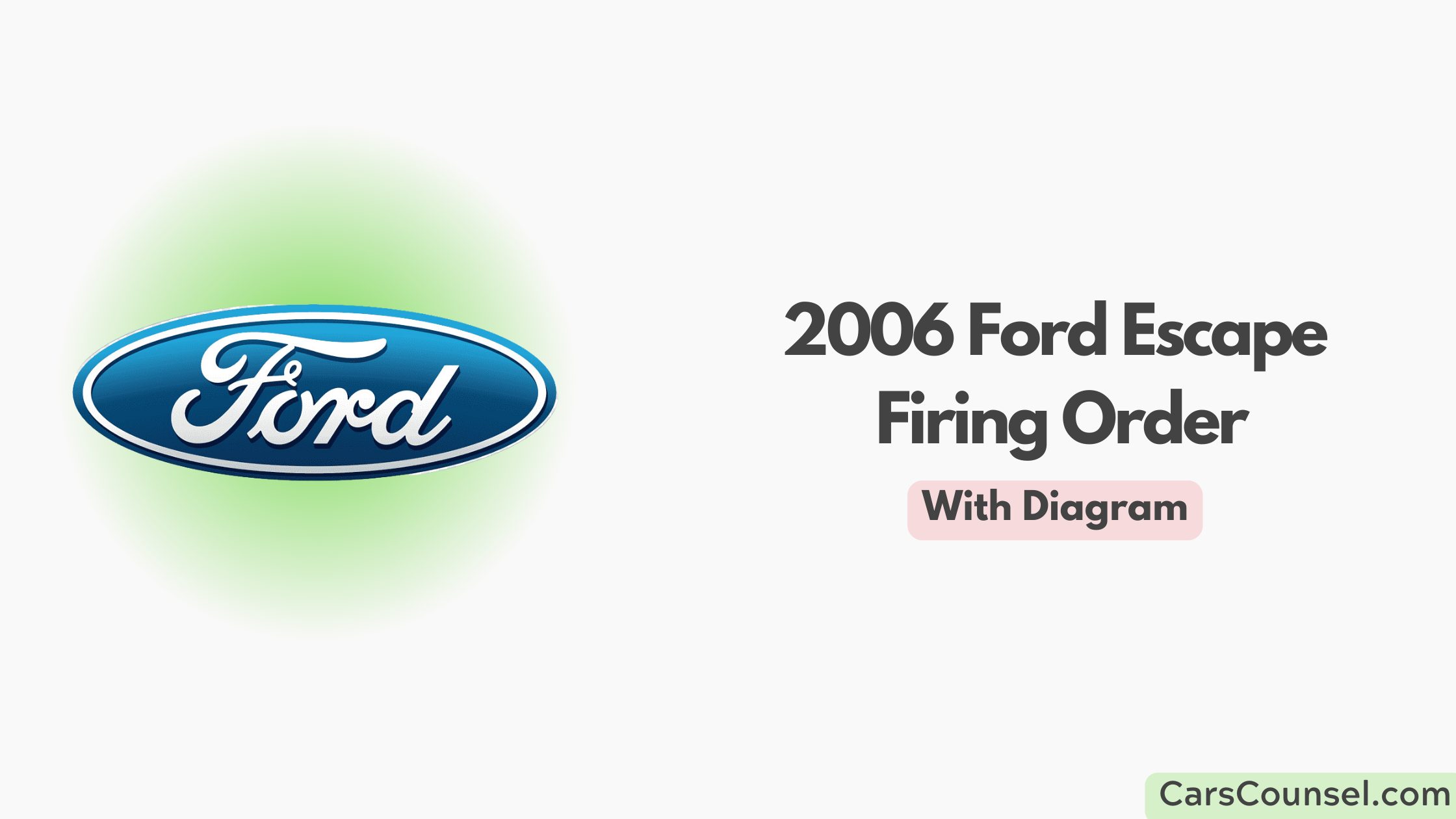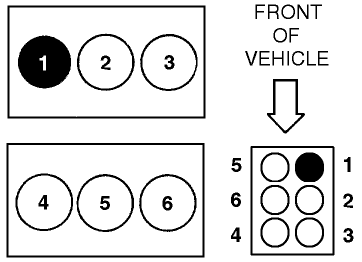The way your 2006 Ford Escape’s engine fires is in the sequence 1-3-4-2. This sequence starts from the front cylinder and it’s important for making the engine work well.

If the firing is wrong or doesn’t happen, it can cause the car to idle roughly, lose power, or even damage the engine. Getting this sequence right helps to prevent the engine from shaking and keeps the crankshaft working properly.
Knowing the firing orders of similar engines, like the Toyota RAV4 and Chevrolet Equinox, can help improve the performance of your engine. Having this knowledge can help you understand a lot more about your car’s engine.
Quick Navigation
Key Takeaways
- The 2006 Ford Escape uses a 1-3-4-2 firing order, starting from the engine’s front cylinder.
- This order helps the engine work smoothly, reduces shaking, and makes the crankshaft’s job easier.
- A picture or sketch can make it easier to understand and follow this firing order when you’re fixing or taking care of your car.
- The 2006 Ford Escape has the same firing order as the Toyota RAV4, Honda CR-V, and Chevrolet Equinox.
- If the firing order is wrong, your car might use more gas, idle roughly, lose power, have trouble starting, or turn on the check engine light.
Understanding 2006 Ford Escape Firing Order

To get how the 2006 Ford Escape’s firing order works, you need to know the pattern 1-3-4-2. This pattern makes sure each part of the engine fires at the right time, which helps the engine work better.
The firing order isn’t just important, it’s crucial for your car to work well. This pattern makes your engine run smoothly and efficiently by lowering the shaking and spreading the work across the main engine part, the crankshaft.
The first cylinder, which is at the front of the engine, starts this firing sequence. It’s this exact order of events – the pistons and spark plugs working at the right times – that keeps your engine running well.
If you don’t understand your car’s firing order, your engine may not work as well and your car may use more fuel. So, it’s really important to know your Ford Escape’s 1-3-4-2 firing order.
Identifying Symptoms of Engine Tune-Up Needs
Knowing when your 2006 Ford Escape needs a tune-up can help keep your car running smoothly and use less gas. It’s good to know the signs that your car might need some extra care or routine service.
Here are some things to watch for:
- You’re using more gas than usual: If you find yourself at the gas station more often, this could be a sign.
- Your car idles roughly or stalls: This might mean your car needs a tune-up.
- You’re losing power: If your Escape isn’t as peppy, it’s worth looking into.
- You have trouble starting your car: If it’s hard to get your car going, it might be time for a tune-up.
- Your check engine light is on: If you see this light, don’t delay. It’s time for a tune-up.
Comparing Firing Orders of Similar Engines
Now that you know what to look out for when your engine might need some work, let’s take a look at how engines that are similar to your 2006 Ford Escape work. How an engine fires can greatly affect how well it runs.
Take a look at this simple chart:
| Car Model | How it Fires |
|---|---|
| 2006 Ford Escape | 1-3-4-2 |
| 2006 Toyota RAV4 | 1-3-4-2 |
| 2006 Honda CR-V | 1-3-4-2 |
| 2006 Subaru Forester | 1-3-2-4 |
| 2006 Chevrolet Equinox | 1-3-4-2 |
This chart shows that most engines that are similar to the Ford Escape fire in the same order, with the exception of the Subaru Forester. Knowing these similarities and differences can help you get the most out of your car’s engine.
Engines with Similar Firing Orders
Conclusion
Now that you know the firing order of the 2006 Ford Escape, you can ensure your engine runs smoothly. Keep an eye out for any signs that might indicate your car needs a tune-up, much like a grumpy bear shows signs of waking up from sleep.
Remember, your Ford’s firing order is specific to your car model, and is different from other models like the RAV4 or CR-V. Keeping this ignition sequence perfect is key for your Ford Escape to run efficiently and smoothly in the city.

